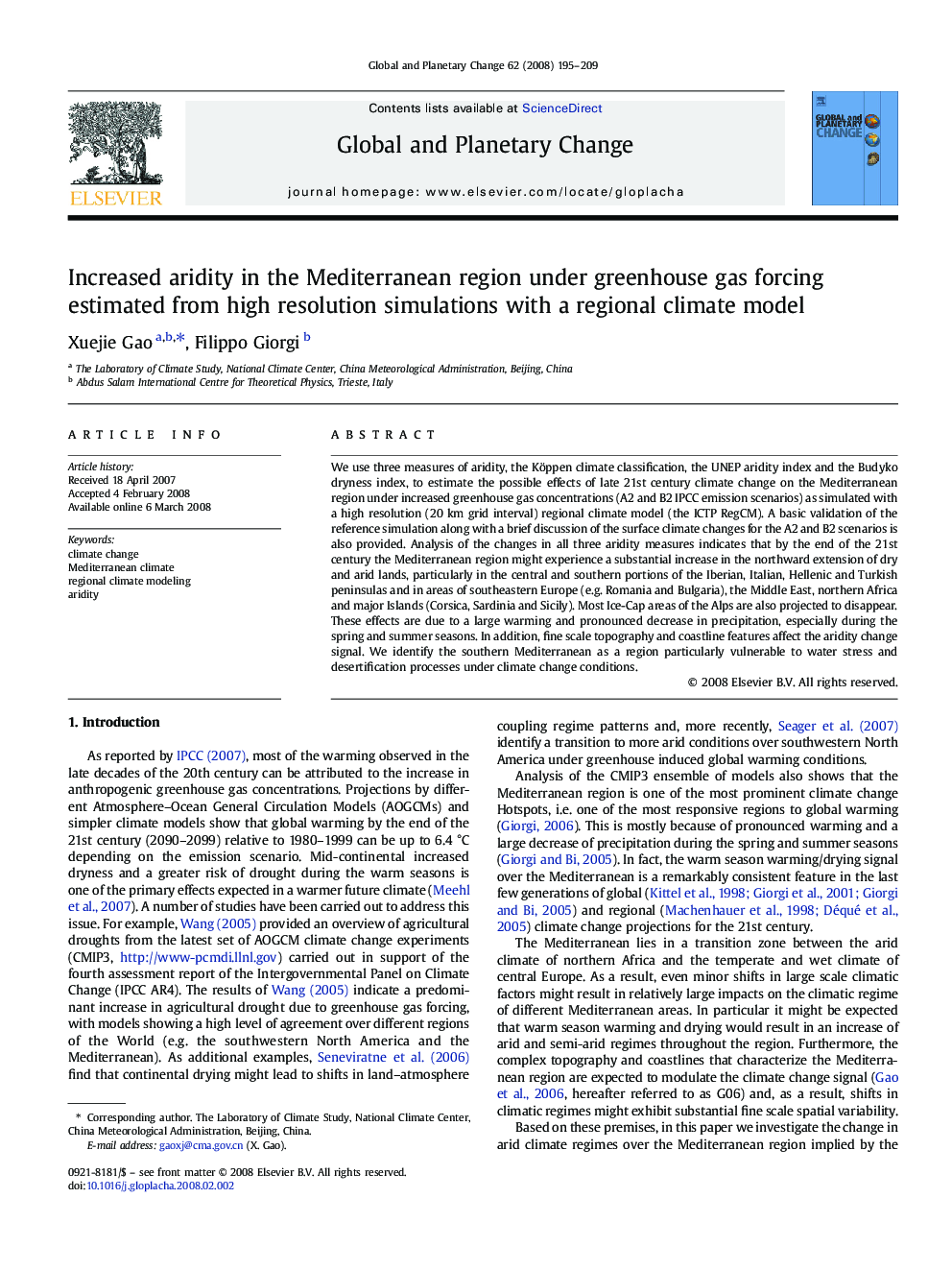| Article ID | Journal | Published Year | Pages | File Type |
|---|---|---|---|---|
| 4464152 | Global and Planetary Change | 2008 | 15 Pages |
We use three measures of aridity, the Köppen climate classification, the UNEP aridity index and the Budyko dryness index, to estimate the possible effects of late 21st century climate change on the Mediterranean region under increased greenhouse gas concentrations (A2 and B2 IPCC emission scenarios) as simulated with a high resolution (20 km grid interval) regional climate model (the ICTP RegCM). A basic validation of the reference simulation along with a brief discussion of the surface climate changes for the A2 and B2 scenarios is also provided. Analysis of the changes in all three aridity measures indicates that by the end of the 21st century the Mediterranean region might experience a substantial increase in the northward extension of dry and arid lands, particularly in the central and southern portions of the Iberian, Italian, Hellenic and Turkish peninsulas and in areas of southeastern Europe (e.g. Romania and Bulgaria), the Middle East, northern Africa and major Islands (Corsica, Sardinia and Sicily). Most Ice-Cap areas of the Alps are also projected to disappear. These effects are due to a large warming and pronounced decrease in precipitation, especially during the spring and summer seasons. In addition, fine scale topography and coastline features affect the aridity change signal. We identify the southern Mediterranean as a region particularly vulnerable to water stress and desertification processes under climate change conditions.
